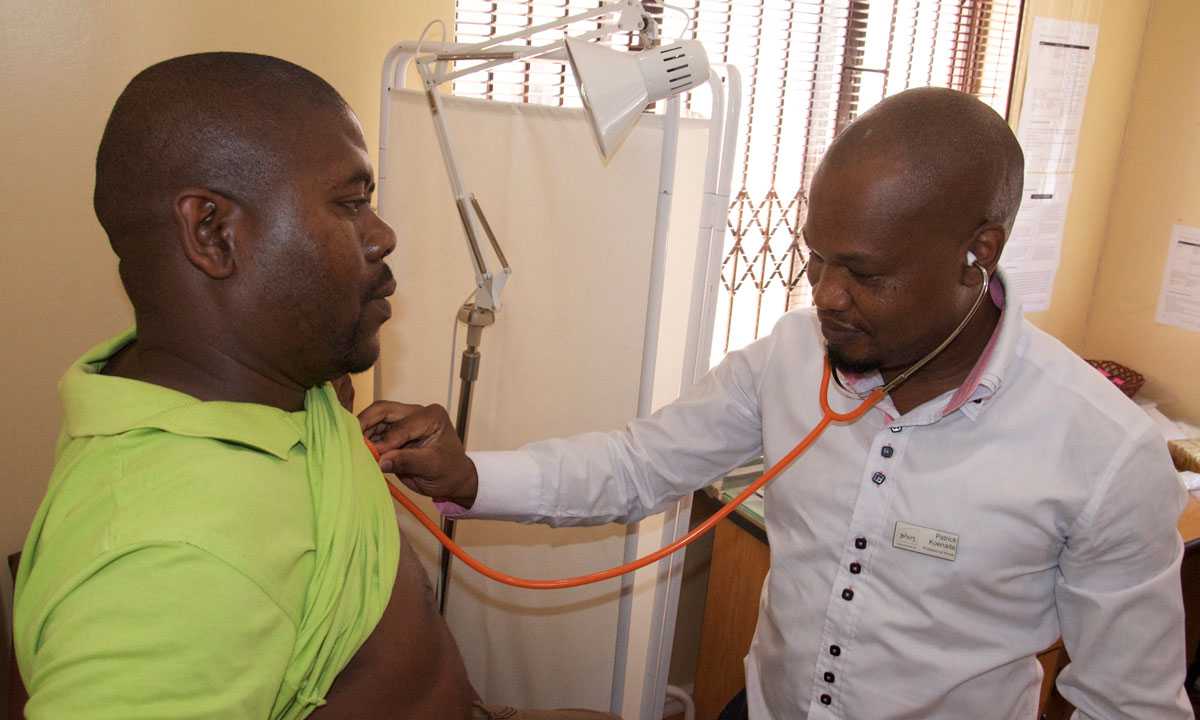CDC's HIV/AIDS Care and Treatment Programs in South Africa:
Antiretroviral Treatment and Services: Prolonging and Improving the Quality of Lives
South Africa has the largest HIV burden in the world and a corresponding need for antiretroviral therapy (ART). ART, when taken correctly, provides patients with hope while improving their quality of life.
In 2003, the South African government implemented a five-year ART rollout program. The 2008 Human Sciences Research Council (HSRC) report states that South Africa is currently implementing the largest ART program in the world. To support the rapid ART scale-up, the South African government developed a national plan that outlines the goals of the ART rollout and identifies the priorities of care and treatment.
As of 2010, the U.S. Centers for Disease Control and Prevention in South Africa (CDC South Africa), through its Global AIDS Program (GAP), and as part of the President's Emergency Plan for AIDS Relief (PEPFAR) supports the delivery of comprehensive HIV/Aids and TB services to millions of South Africans. About 1.6 million people received HIV testing and counselling, and more than 800,000 adults and children received antiretroviral therapy.
According to a 2008 WHO report, there are an estimated 1.7 million people in South Africa in need of ART (based on earlier treatment threshold of a CD4 count of 200). CDC South Africa supports the National Department of Health's (NDOH) efforts to improve access to quality treatment services.
Only 13.7% of South Africans have access to medical insurance so many cannot afford ART. To help address the need, CDC South Africa supports ART sites in government facilities, as well as settings outside of the public sector such as mission hospitals, non-governmental organizations, and private programs through general practitioners. The government of South Africa and some accredited non-governmental health facilities provide antiretroviral drugs at no cost in the public sector to HIV-infected South Africans with CD4 counts below 350.
Improving Primary Health-Care Services
Many clinics designated as ART clinics were built before the advent of the HIV epidemic and do not meet accreditation standards. CDC South Africa is working hand-in-hand with NDOH to achieve accreditation standards by renovating facilities to ensure there is sufficient space and appropriate equipment for service delivery.
CDC South Africa and its implementing partners are committed to protecting children's futures by ensuring that HIV-infected children are primary recipients of ART. Without treatment, most children will not live beyond adolescence. In South Africa, children make up 40% of the population. CDC South Africa is committed to increasing the number of children on treatment to 10%-15% of the population on treatment.
Health-Care Worker Shortages

The public sector is struggling to meet the treatment coverage rate for children due to a shortage of skilled healthcare workers. The public sector cares for 40 million people compared with the private sector, which cares for 6 million people. There are many reasons for the large number of vacancies including:
- Private sector pays better;
- Health-care professionals are heavily recruited by the other countries with their own health worker shortages, including the United Kingdom, Canada, the United States, and Saudi Arabia;
- Heavy workload in the public sector;
- Ineffective management;
- Certain categories of staff, e.g. pharmacists, have better opportunities in the private sector;
- Rural communities have limited resources and few incentives to live there; and
- Severely under-resourced health-care system
CDC South Africa and its implementing partners work closely with the NDOH to build the human resource capacity at the primary health-care level by conducting trainings and working with medical and nursing schools to ensure their curriculum addresses HIV. This includes a significant effort to increase the availability of doctors, nurses, pharmacists, lab staff, and community health workers in support of the ART rollout. All these activities aim to develop a new cadre of effective health-care professionals.
To effectively monitor the progress of patients, South Africa must have a strong monitoring and evaluation (M&E) capacity. Currently, South Africa and its partners are building and designing data registers to ensure the accurate and timely utilization of data.
- Page last reviewed: December 5, 2011
- Page last updated: December 5, 2011
- Content source:
Global Health
Notice: Linking to a non-federal site does not constitute an endorsement by HHS, CDC or any of its employees of the sponsors or the information and products presented on the site.


 ShareCompartir
ShareCompartir